
|
|
Urban Seniors The Graying of Metropolitan AmericaBy 2030, one in five Americans is projected to be 65 or over, up from one in eight today. The aging of America has generated much concern nationally, particularly over the ability of Social Security and Medicare to pay future promised benefits. However, the population is not aging uniformly across the nation. Consider the top 100 metropolitan areas, where more than 60 percent of older Americans live. At one end of the spectrum is Bradenton-Sarasota-Venice, FL where more than one in four people were already 65 or older in 2008. At the other extreme is Austin-Round Rock, TX where only 1 in thirteen fell into this age group. A recent survey of 10,000 local governments found that less than half were ready to tackle the needs of an aging population with regard to such services as health care, housing, transportation, public safety, and workforce development. As a first step, local governments should understand the age distribution of their populations so they can anticipate the magnitude of their needs and prepare to successfully address them. Metro areas with the largest share of older adults in 2008 generally were concentrated in the Northern United States, Ohio, and Florida. Many of these areas experienced an increase in the share of their older populations over the past two decades. With the loss of manufacturing jobs in the 1970s, young people fled the Rust Belt to cities with better employment opportunities. Years later, the effects were still being felt in metro areas like Buffalo, Syracuse, Bethlehem, Pittsburgh, Cleveland, and Youngstown, which saw their share of residents age 65 and older increase during the 1990s. For example, Syracuse?s share of older adults increased by 7 percent. Meanwhile, traditional retirement havens like Bradenton, Miami, Orlando, and Tampa, experienced declines in their older population shares. Tampa lost nearly 11 percent of its share of seniors and Miami lost about 26 percent. During the 2000s, growth in the older population share accelerated for 61 of the top 100 metros, especially metros in California. For example, the fraction of seniors in San Jose, Oxnard-Thousand Oaks-Ventura (CA), and Los Angeles increased by more than 11 percent between 2000 and 2008. Seven of the top-ten fastest graying metropolitan areas during the 1990s also ranked in the top ten during the 2000s (Honolulu, Virginia Beach, Lansing-East Lansing (MI), San Jose, Dayton, Augusta-Richmond County (GA), and Oxnard-Thousand Oaks-Ventura (CA)). In contrast, three metropolitan areas ranked in the top ten during both the 1990s and the 2000s for their decline in the share of seniors (Charlotte-Gastonia-Concord (NC-SC), Bradenton, and Tampa). Honolulu, which experienced double-digit growth in its older population share during the 1990s and 2000s, ranked among the top ten grayest metro areas in 2008 with 15.2 percent of residents 65 and older. Honolulu ranked 10th in 2008, up from 22nd in 2000, and 59th in 1990. Even though Bradenton and Tampa experienced a decline in the share of their older populations during the 1990s and 2000s, they still ranked first and fourth in 2008, respectively. Palm Bay, Scranton, Lakeland-Winter Haven (FL), Youngstown, Pittsburgh, Miami, and Buffalo rounded out the top 10 metros with their share of seniors in 2008. The metropolitan areas with the smallest shares of the population age 65 plus in 2008 included Denver, Colorado Springs, Charlotte-Gastonia-Concord (NC-SC), Bakersfield (CA), Salt Lake City, Houston, Dallas, Atlanta, Raleigh, and Austin. They are concentrated in Colorado, Texas, North Carolina, South Carolina, and Georgia?all among the fastest growing states in America. The graying of metropolitan America will intensify over the next decade as boomers reach age 65. More than ever, older adults want to age in place in their current homes and communities. To support this lifestyle, metropolitan areas must create livable communities providing seniors access to affordable and quality health care, housing, and transportation and where older adults feel safe, live independently, and are active members of society. |
Expert Feedback
Send us your comments to help further the discussion. Share
Commentaries
|




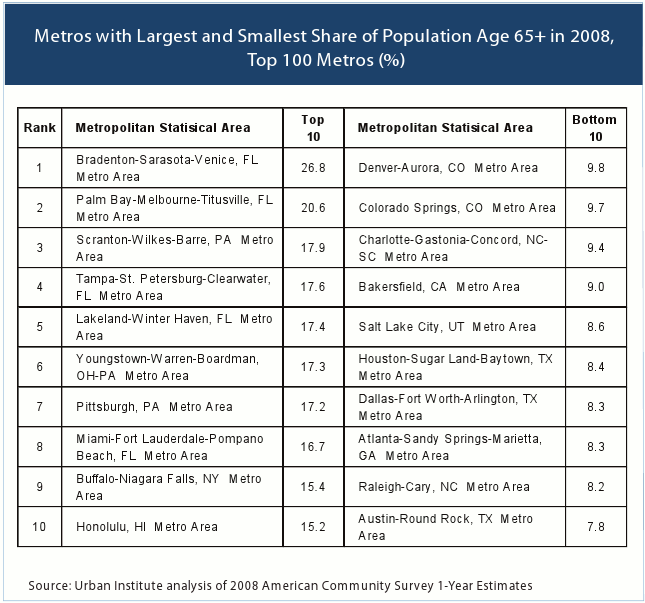
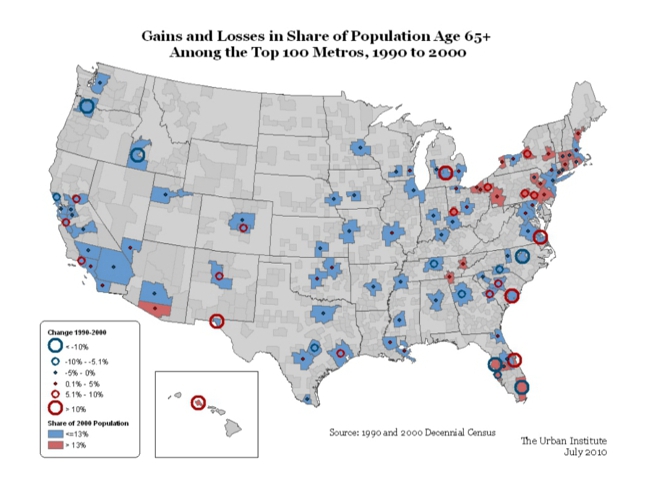
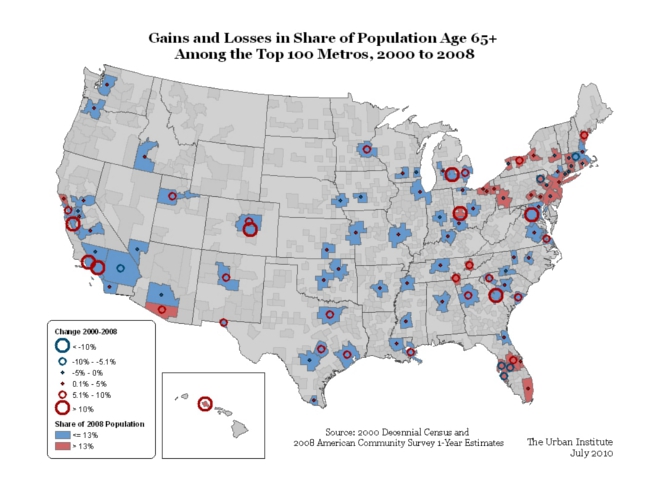
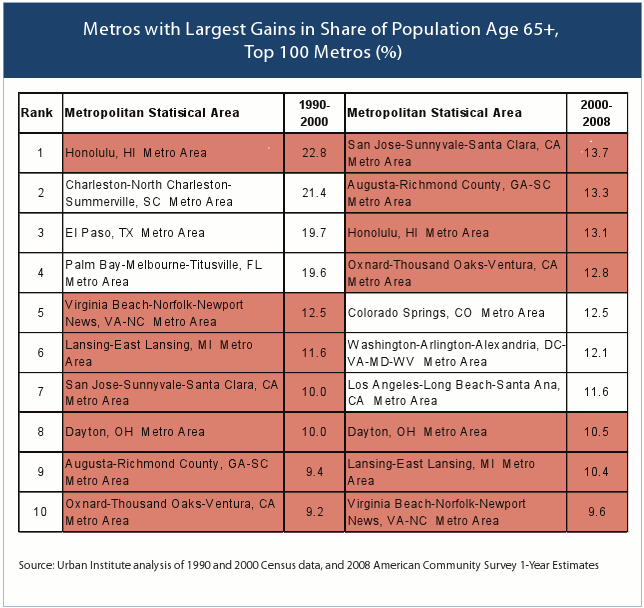
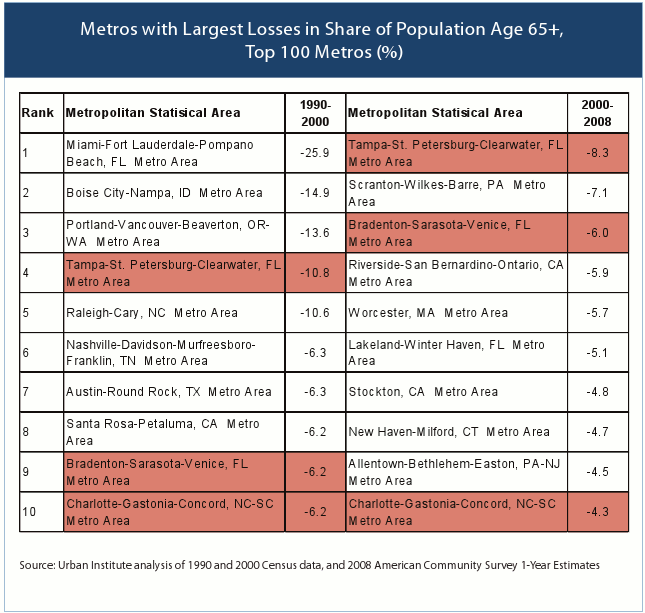
 Barbara Butrica
Barbara Butrica